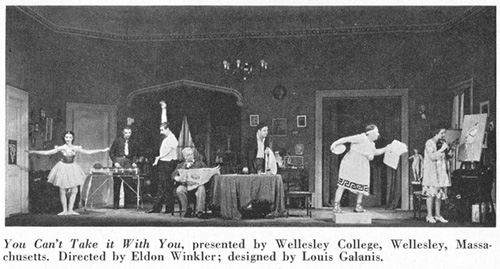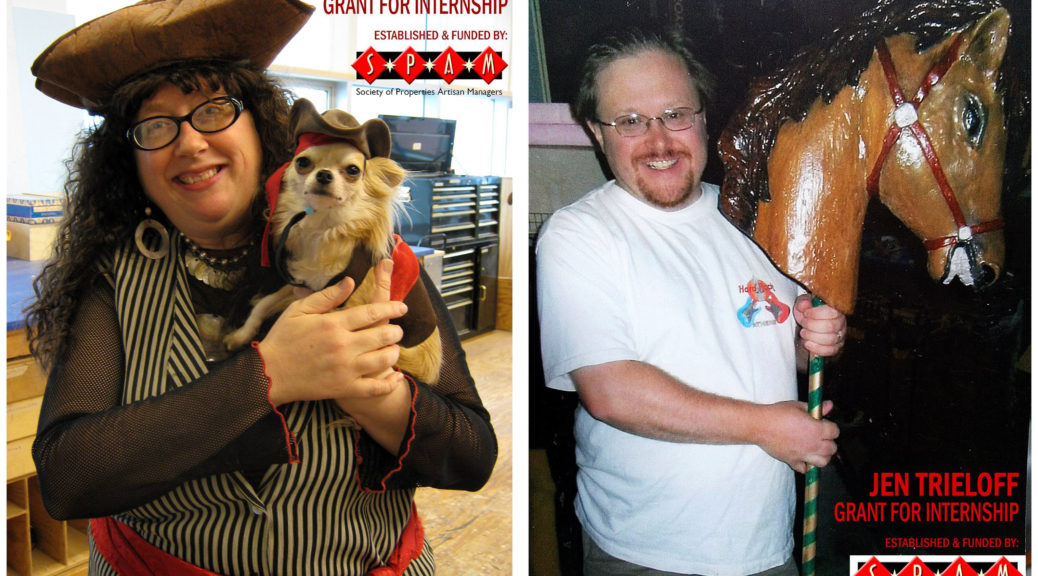The following comes from a 1912 issue of The New York Times:
British Museum Contains Rich and Interesting Collection of Curious Relics.
Not the least interesting of the thousands of exhibits at the British Museum are those connected directly or indirectly with the stage. There is nothing in the Babylonian section pertaining to the subject, but the Egyptians supply us with what is probably the oldest wig in the world; a wig, it is true, that was in no way connected with the drama, but one that will compare favorably with the finest creations of the theatrical perruquier. Strangely enough, the tresses are made of plated crêpe hair, exactly similar to that used by modern actors for mustaches.
In the Graeco-Roman department may be seen the cosmetic box of a Roman lady. The white and flesh-colored chalks and rouges are similar to those used for “making up” in the days previous to the invention and manufacture of grease paint. There are also two objects of the theatrical life of the past that have their replicas in the theatres of the present day. One is a thin, oblong slab of stone bearing the Latin words “Circus plenus,” which was occasionally to be found outside a Roman circus, and corresponded to the familiar modern notice “House Full.” The other is a plain ivory disk displayed in the Egyptian room, but which would hardly attract attention. This common-looking object is a theatre check or pass, but whether of a temporary or permanent character cannot be ascertained.
Much the richest department in stage objects, however, is the Graeco-Roman, where one case of stage exhibits may be seen. Here are to be found specimens of the masks worn by actors, which were modeled according to strict rules. They were made of terra-cotta, and must have been very uncomfortable to wear (Editor’s note: We now know the actual masks were made of linen. The terra-cotta masks were models which were never actually worn). There are also numerous statuettes in bronze and terra-cotta of actors wearing their masks in the various characters they impersonated, in addition to models of masks of every description and kind. A good idea of the manner in which plays were staged in those days may be gathered from the scenes from plays as depicted on vases and a terra-cotta lamp. In the wall cases may also be seen various objects illustrating the gladiatorial combats in the arena, also the swords, helmets, and badges of those doughty champions. In addition, there are also several specimens of the discus, the throwing of which was one of the features of the late Olympic meeting, and of the weights held by the athletes in the jumping contests.
To come to more recent times, there is in the British mediaeval room a beautifully carved casket made from wood of the mulberry tree in Shakespeare’s garden, which was presented to David Garrick when he received the freedom of Stratford-on-Avon. A little further along, in the Ethnological Gallery, may be seen a very fine collection of marionettes and puppets used in the Javanese theatres. The figures are articulated, and worked by means of thin sticks attached to the limps. The Javanese are passionately fond of these shows, which are even more popular in Java than the old-fashioned “Punch and Judy” used to be in this country, or “Guignol” in France. In fact, they very much recall the fantoccini or puppet shows which delighted our forefathers.
In this same gallery are many quaint costumes and masks worn in primitive dances by the savage races of the globe, the most remarkable of which are perhaps some tortoiseshell masks fashioned to resemble crocodiles (Editor’s note: This is a horrible way to describe other cultures. I leave it in to remind us that much of our knowledge of non-Western cultures originally came from racist sources, and this type of thinking may still color our current views, even when the language has been made more politically-correct). Although these dances were generally of a religious character, they were nevertheless essentially pantomimic, and bear some analogy to the mystery play of mediaeval times.
“Ancient Stage Properties.” New York Times, 29 Sept. 1912, p. S4. The New York Times Archives, www.nytimes.com/1912/09/29/archives/ancient-stage-properties-british-museum-contains-rich-and.html.


